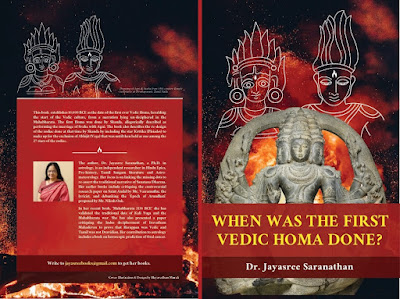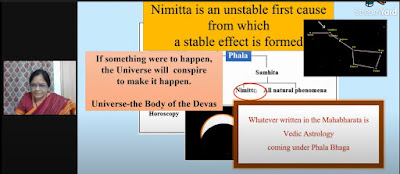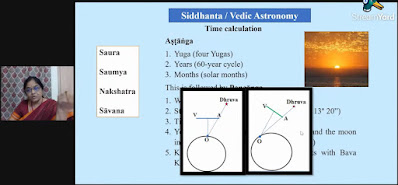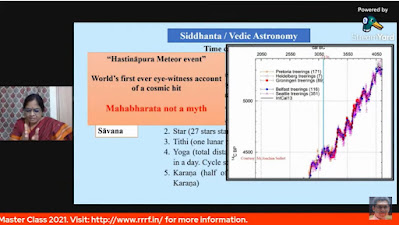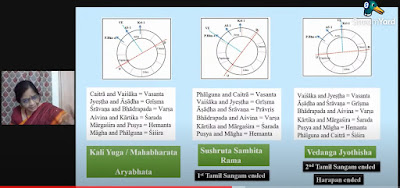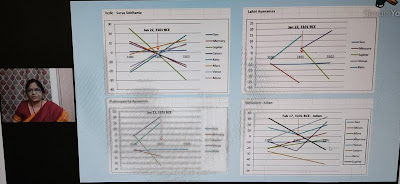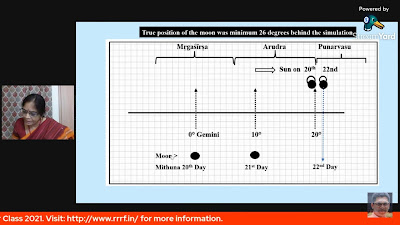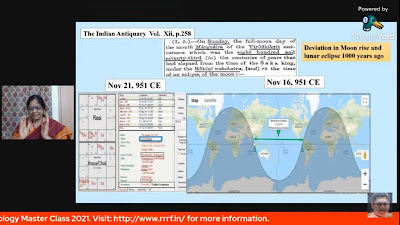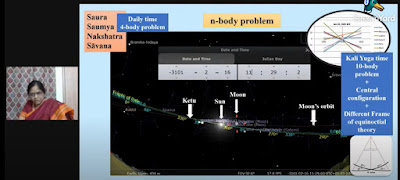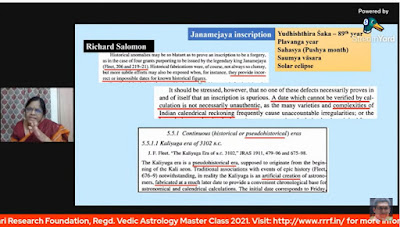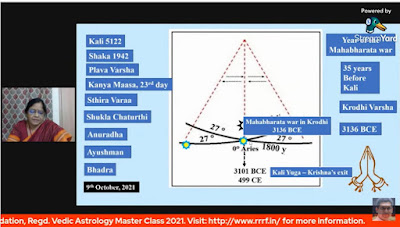Part
2: Was
the week-day concept conceived in Gunung Padang Structure (GPS) located on Mt.
Suryavān?
Gunung
Padang Megalithic structure (GPM) that appears to be Mt. Suryavān described in
the Vālmīki Rāmāyana was part of a larger landmass known as Shāka Dwīpa that is
currently named as Sundaland. GPM is likely to be the place where Sun-worship
known as ‘Saura’ of the Vedic society evolved.
The
Vedic religion (known as Dharma or Sanātana Dharma which refers to eternal
concepts that are applicable to all
places, to all people and at all times) has six types of worship methods
(Shanmata) of which Saura or sun-worship is one. Though there are sun temples
in India where the Sun is worshiped, the exact Saura worship method is not
followed now as it used to be, if we go by the description given in Bhaviṣya
Purāna. This text describes how the sun worship was done and where it
originated. It didn’t originate in present day India! But since it is part of Vedic
Dharma, it is understood that those ancestral to the Vedic people had conceived
and spread this worship. Its location of origin was Shāka
Dwīpa.
The
time of emergence of Saura and the worship methods gleaned from Indic texts
remarkably match with the time of fresh additions in the GPM – the 2nd
layer dated around 11,000 years ago. That was the time the earth started
receiving a steady increase in solar light and energy – after the end of Ice
age.
Location of Shaka Dwīpa not
in Central Asia
There
is a tendency among researchers to identify Shāka Dwīpa with Shakasthan
(Sistan) and Persia. But the locational description on Shāka Dwīpa given in the
Mahābhārata does not fit with Central Asia. There are two major reasons for
Shāka Dwīpa to be elsewhere and not in Central Asia.
One
is that the very name Shāka in Shāka Dwīpa was derived from the tree Shāka that
was abundantly found there. It was like how Jambhu Dwīpa (housing India) was called by the name of
Jambhu tree (Syzygium cumini) found in
abundance there.
Shāka
tree is native to South Asia and South East Asia and not to central Asia or
Europe. Its botanical name is Acacia sirissa or Albizia lebbeck. This was known
as Uzhinjil (உழிஞ்சில்) or Unna (உன்ன மரம்) or Pālai (பாலை மரம்) in Tamil. Its
flower was held in high esteem and worn as a mark of victory in war. In
Sanskrit it is known as Shirīsha and in Tamil it is known as Vāgai (வாகை).
Shāka flower that
was worn as a symbol of victory.
The
second reason why Shāka Dwīpa could not be located in Central Asia was that as
per the description found in the Mahābhārata and Vishnu Purāna, Indra gulped
the waters of the seas in Shāka Dwīpa every day and gave back as rains in time
to the same place. This perfectly fits with the monsoon activity in the Indian
Ocean regions, thereby indicating the location of Shāka Dwīpa in that region. (The
Brahmānda Purāna verse on the location of Shāka Dwīpa close to the north of
Tropic of Capricorn was quoted in Part
1).
The
presence of seven countries (varsha-s) in Shāka Dwīpa sounds similar to the
seven divisions of the olden Tamil country of the 1st Sangam Age
located outside India, each having further seven divisions, making the overall
number of 49 countries in the Tamil Pāndya kingdom having Southern Madurai as
its capital.
The
Mountains, countries and rivers of Shāka Dwīpa given in the Mahabharata are identifiable
in South east Asia and not in Central Asia.
I
attempted to locate the seven mountains based on the description of the
Mahābhārata as follows:
1. Meru also known as Mahākāśa – Likely to be Pura Besakih in Bali https://en.wikipedia.org/wiki/Besakih_Temple
2. Malaya stretching towards east – appears to be New Guinea Highlands https://en.wikipedia.org/wiki/New_Guinea_Highlands
3. Jaladhāra - From where Indra takes water every day and showers as rainfall – Fits with Titiwangsa mountains of the Malay Peninsula. https://en.wikipedia.org/wiki/Titiwangsa_Mountains
4.
Mount
Raivataka – the star Revatī (Zeta
Piscium) is placed directly above which means the mountain was on the equator. Later
the region came to be known as Kaumāra after Skanda alias Kumara who lived here. There was
a crater formed by an extra-terrestrial impact some 22,000 years ago and where
the first speech of the ancestral Vedic society evolved (Markandeya Purāna –
Video: https://www.youtube.com/watch?v=x5OoX4NHXI4 )
Now this mountain and region are under water.
5. Shyāma – Means black. Dark complexioned people resided here. Matches with Papuans and Malenesians who continue to live in Papua New Guinea. The mountain range is Papua New Guinea High lands https://en.wikipedia.org/wiki/New_Guinea_Highlands
6. Kesarī - In Sanskrit it refers to lion, and also a tree. Lion doesn’t seem to be native to Sundaland, but a tree variety known as Ceylon Ironwood (Mesua ferrea) is found abundantly in Philippines, Sumatra, Malaysia. https://en.wikipedia.org/wiki/Mesua_ferrea
7.
Durgaśaila-
No specific description is available for the mountain but it was a Varsha
(country) where Shāka trees were found in abundance as per the Mahābhārata.
The
countries or Varsha-s
–They were seven in number named as Meru, Malaya, Jaladhāra, Raivataka, Shyāma, Kesarī
and Mahāpumān where Mt. Durgaśaila was situated. Shāka tree was found in this country. https://en.wikipedia.org/wiki/Albizia_lebbeck
Going
by the presence of this tree, New Guinea and Northern Australia fit the bill as the
location of Shāka Dwīpa Proper. This is exactly the same as what is
given in Brahmānda Purāna. It is reproduced from Part 1.
The
names of rivers given by the Mahābhārata further reiterate that the location of
Shāka Dwīpa was not in central Asia but in South east Asia. Rivers
such as Sukumāri, Kumāri, Seta, Keveraka, Mahānadī, Manijalā, Chakshus, and
Vardhanikā were flowing in Shāka Dwīpa. There were other rivers too
but these were specifically mentioned.
River
Kumāri
was in Southern Madurai where Skanda lived (circa 9990 BCE) and Pāndyan dynasty
thrived for 4440 years. That land had gone under water. Southern Madurai was
lost to the seas some 7200 years ago. (To know the chronology of the periods
that followed three floods since the end of Ice Age as given in Tamil texts,
check my book on kindle https://www.amazon.com/dp/B0BC48ZVDZ )
In
the Vishnu Purana
description
of Shāka Dwīpa, a river by name Ikshu is mentioned. Ikshu means
sugarcane. So, sugarcane growing region has lent the name Ikshu to the river.
Sugarcane is native to Papua New Guinea and South China. We rule out South
China as it is not part of Shāka Dwīpa. Historically the Papuans and
Austronesians were found to have domesticated sugarcane. A river in their
location was known as Ikshu. Sugarcane was later introduced to North India in
the Gangetic plain (the glacier-fed River Ganges / Ganga started flowing only
in Holocene).
The people of Shāka Dwīpa
The
missing pre-history hidden in Sundaland is further revealed by the Indic texts.
Both the Mahābhārata and the Vishnu Purāna state that there were four classes
of people (varna-s) such as Brahmins (priests), Kshatriya-s (warriors), Vaisya-s (traders) and Shudra-s (tillers) in
Shāka Dwīpa. It is also stated that Shāka Dwīpa was
the only place other than Bhārata varsha (India) where this four-some
classification was in existence. The Tamil connection to Shāka Dwīpa is found
in this context too, as the Sangam Age Tamil Grammar book, Tolkāppiyam states
the presence of these four classes in addition to three more namely, astrologers (Arivan),
ascetics (Tāpathar) and war-field singers (Porunar).
The
first four classes in that order are mentioned as Magā, Maśakā, Mānasā and Mandagā.
The
Magā-s (Brahmins of Shāka Dwīpa) were also known as Mriga in Vishnu Purāna, but
found mentioned as Magā in Bhaviṣya Purāna and inscriptions. The Magā Brahmins
initiated the sun worship. Shiva- worship also was done in Shāka Dwīpa. The
Mahābhārata states that Shiva was the deity of Shāka Dwīpa. This must have
started only with Skanda about 12,000 years ago (during Younger Dryas). Saura
(Sun) worship must have started before that when the southern hemisphere
started receiving more heat from the sun (Older Dryas -14,000 years ago). The
first experience with the sudden increase in solar heat was welcomed by the
people of Shāka Dwīpa, most probably by
those living near the equator at GPM. Thus started the Saura worship.
(To
be continued in Part 4)






